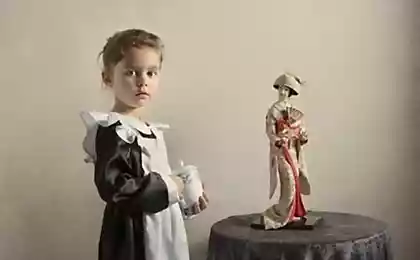371
The "green pen"
The "green pen", developed by Tatyana Ivanko, when engaged with his daughter. training arm to the letter. However, you can try to use this principle of "green paste" in other areas of training and education! He teaches student of any age, not to focus on the failures, and to notice your progress! This is an important coaching approach.

So, in essence:
When the child wrote in a notebook, mom's not underlined in red paste error of the child, as it did in elementary school.
She singled out the green paste those letters and hooks, which were obtained from the child well. The girl loved it and always after every line she asked, "Mom, what happened?" And was so happy when mom drew the best letter with the words: "Perfect!"

What is the difference between the approaches?
In the case of underlining errors in red paste, we concentrate on the mistakes. What is deposited in photomemory? That's right, those letters that are written sloppy, what's wrong.
Have you seen these red underlines is written on the letter? No!
Whether we like it or not, but subconsciously we remember the things highlighted.
In the second case, we focus on what has been done right!
We get very different emotions, a different perception. Whether we like it or not, but we subconsciously seek to repeat what was perfect!
It's a very different internal motivation — not a desire to avoid mistakes, and the desire to do good!
And now attention, a question:
As highlighted errors in a notebook affect the later adult life?
The answer is obvious. We are accustomed from childhood to focus on the flaws, on what's wrong, on what we think is bad.
We were taught this in school using the red paste, we accustomed to it at home when often made comments for what is done wrong than praised for what we did well.
20 written in the rows of hooks is underlined only had one.
Ie 19 was written well, and 1 is imperfect.
Why have we concentrated on this one?
This habit (highlight in red the bad) that we hone from childhood and which not to erase from our consciousness in adulthood, and has become the most frequent cause of dissatisfaction in life!
What is the focus, and growing. What is directed attention, and increases.
Since childhood, it all starts from childhood, we are dragged into adulthood all of our habits and skills, and not all of them serve us a good service.
Introducing the principle of "green paste", you can see that even if you do not specify the child on the error, they gradually go away because the child wants to do well himself, according to his good will.published
P. S. And remember, just changing your mind — together we change the world! ©
Join us in Facebook , Vkontakte, Odnoklassniki
Source: science-psy.dirty.ru/metod-zelenoi-ruchki-842765/

So, in essence:
When the child wrote in a notebook, mom's not underlined in red paste error of the child, as it did in elementary school.
She singled out the green paste those letters and hooks, which were obtained from the child well. The girl loved it and always after every line she asked, "Mom, what happened?" And was so happy when mom drew the best letter with the words: "Perfect!"

What is the difference between the approaches?
In the case of underlining errors in red paste, we concentrate on the mistakes. What is deposited in photomemory? That's right, those letters that are written sloppy, what's wrong.
Have you seen these red underlines is written on the letter? No!
Whether we like it or not, but subconsciously we remember the things highlighted.
In the second case, we focus on what has been done right!
We get very different emotions, a different perception. Whether we like it or not, but we subconsciously seek to repeat what was perfect!
It's a very different internal motivation — not a desire to avoid mistakes, and the desire to do good!
And now attention, a question:
As highlighted errors in a notebook affect the later adult life?
The answer is obvious. We are accustomed from childhood to focus on the flaws, on what's wrong, on what we think is bad.
We were taught this in school using the red paste, we accustomed to it at home when often made comments for what is done wrong than praised for what we did well.
20 written in the rows of hooks is underlined only had one.
Ie 19 was written well, and 1 is imperfect.
Why have we concentrated on this one?
This habit (highlight in red the bad) that we hone from childhood and which not to erase from our consciousness in adulthood, and has become the most frequent cause of dissatisfaction in life!
What is the focus, and growing. What is directed attention, and increases.
Since childhood, it all starts from childhood, we are dragged into adulthood all of our habits and skills, and not all of them serve us a good service.
Introducing the principle of "green paste", you can see that even if you do not specify the child on the error, they gradually go away because the child wants to do well himself, according to his good will.published
P. S. And remember, just changing your mind — together we change the world! ©
Join us in Facebook , Vkontakte, Odnoklassniki
Source: science-psy.dirty.ru/metod-zelenoi-ruchki-842765/
























